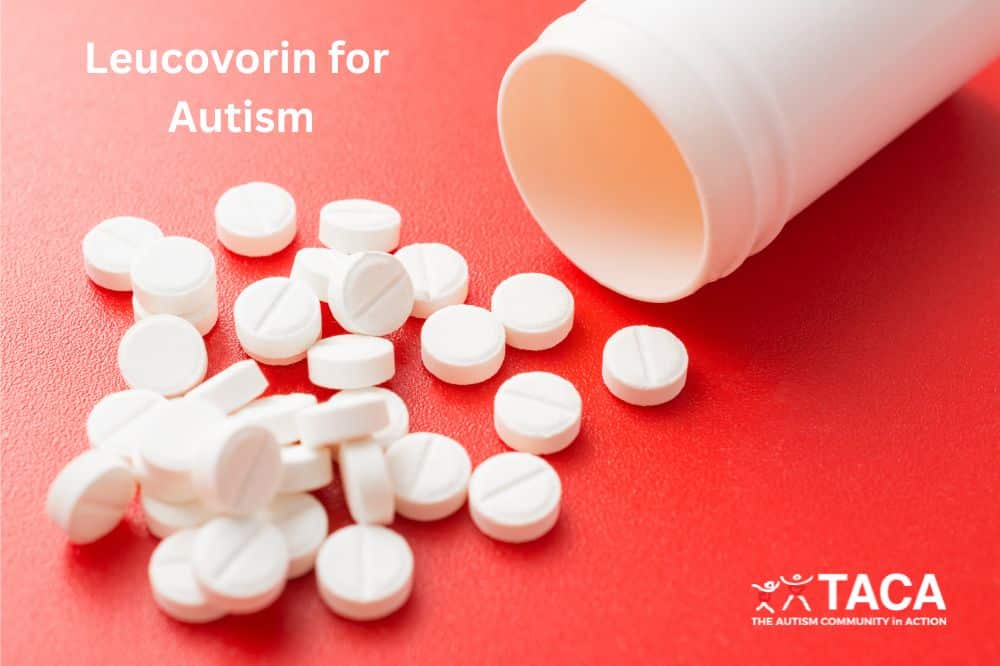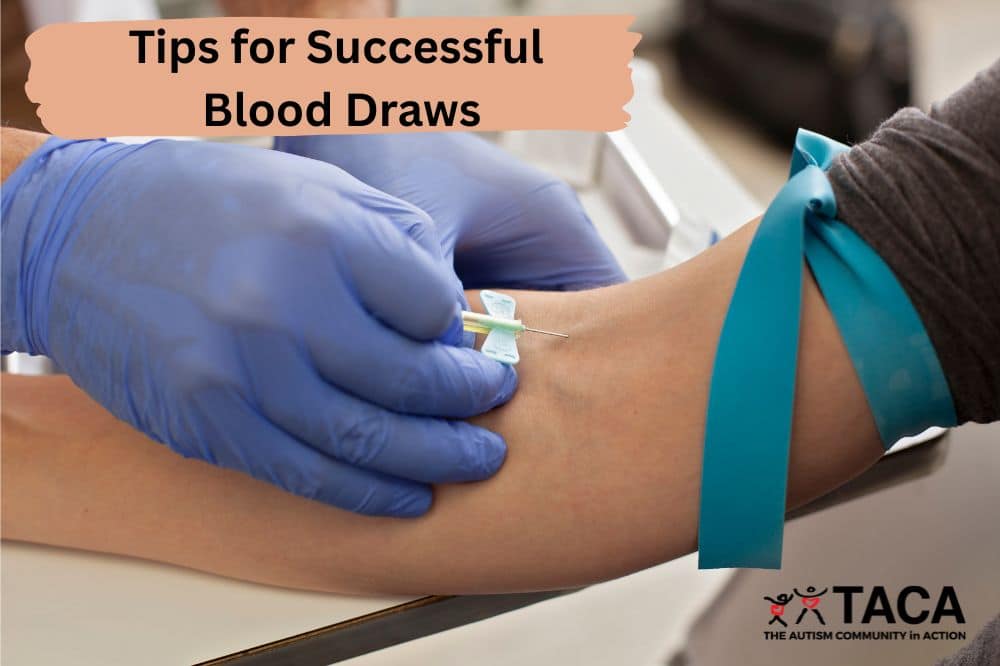Glutamate
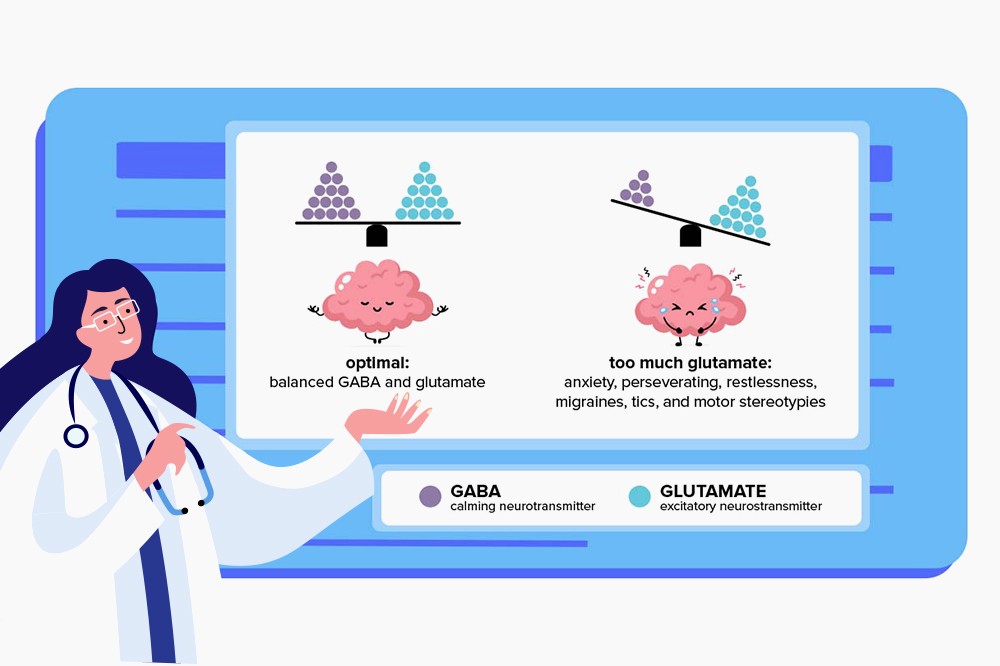
All contents of this resource were created for informational purposes only and are not intended to be a substitute for professional advice, diagnosis, or treatment. Always seek the advice of your physician, therapist, or other qualified health providers with any questions or concerns you may have.
Symptoms we often associate with autism—such as anxiety, tics, and inattention—can be caused by an imbalance of neurotransmitters in the brain, specifically glutamate and GABA. However, reducing the amount of free glutamate in the brain can help alleviate these symptoms. In this article, we will outline why it is important to balance glutamate and GABA, symptoms to look for, and interventions that are helpful.
What are the Symptoms of a Glutamate Imbalance?
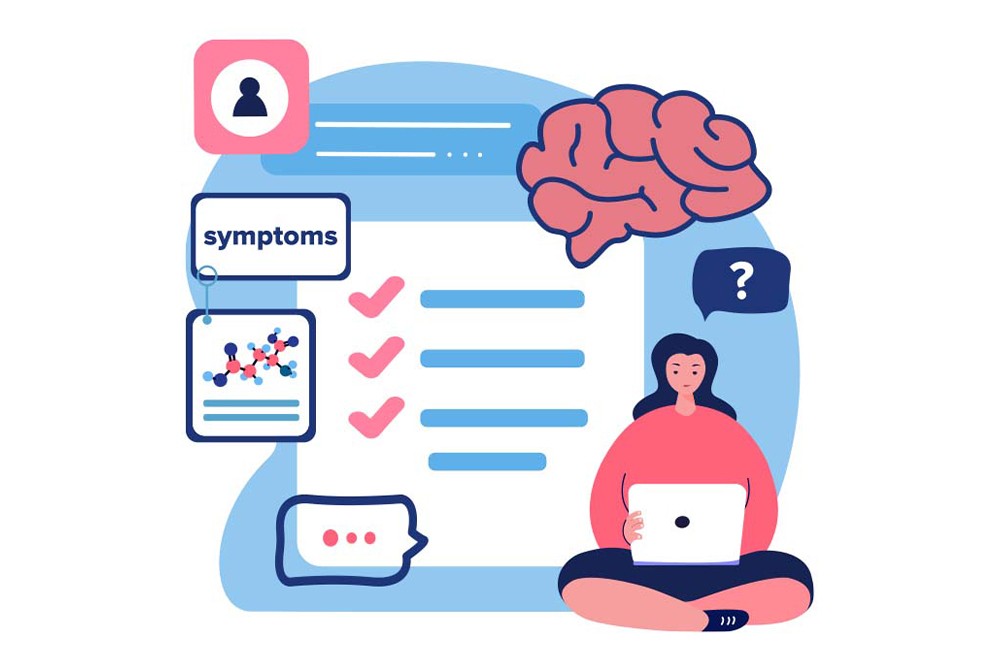
First, let’s talk about the physical and emotional symptoms that can appear when there is too much glutamate in the brain.
Emotional Symptoms
- High Anxiety
- Restless mind
- Cannot turn your brain off when you want to relax
- Disorganized attention or inability to focus
- Worry too much about things you should not
- Gets overwhelmed easily
- Depression
- OCD (Obsessive Compulsive Disorder)
Physical Symptoms
- Behaviors that we typically associate with autism, such as:
- Complex Motor Sterotypies (CMS) – looks like flapping or stimming
- Tics
- Migraines
- Seizures
- Symptoms of PANDAS/PANS
- Cannot handle folate supplements:
- Folates are made up of numerous glutamic acids conjugates.
- When you give a high dose of folate, whether it be 5MTHF, folinic acid, or folic acid, it pushes up free glutamate.
- Therefore, since glutamate is excitatory, you may see excess stimming, headaches, or even aggression on high doses of folate until the glutamate evens out.
- Note that B6 is needed to convert excess glutamic acid to glycine, which is calming.
- For this reason, sometimes B6 (p5p) will help calm down the reaction to folate.
What is Glutamate and What Does it Do?
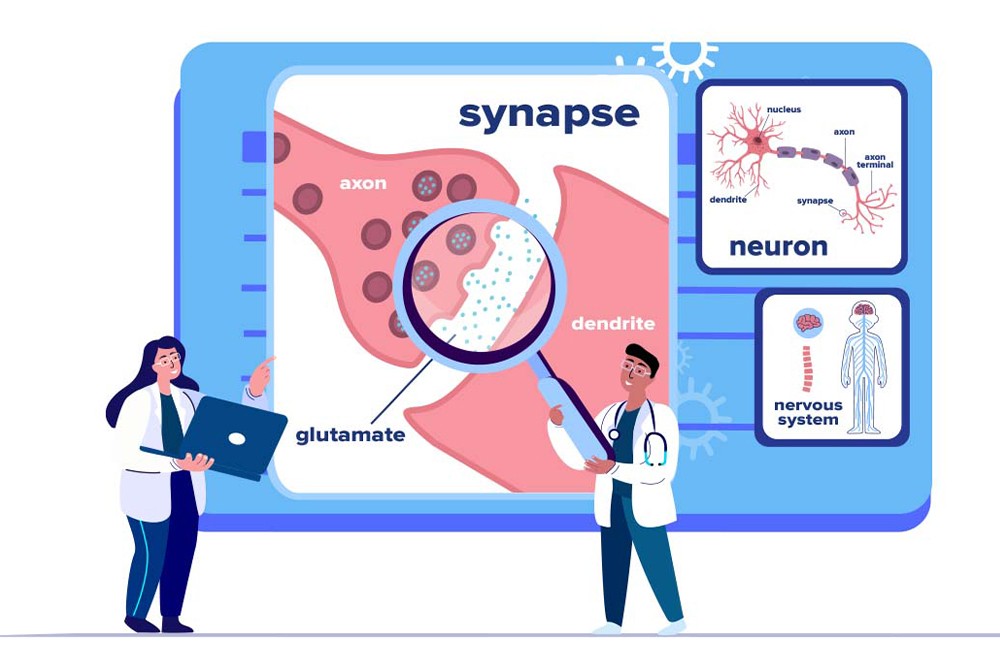
Now that you know what the symptoms of excess glutamate look like, let’s talk about what glutamate is, what it does, and why parents of children with autism should know about it.
What is Glutamate and What Does it Do?
Glutamate is an amino acid neurotransmitter:
- Amino acids are the building blocks of protein.
- Glutamate is a nonessential amino acid.
- This means that glutamate can be made by our body so we do not need to consume it.
- Glutamate is either bound in protein as glutamic acid or unbound as MSG (Monosodium glutamate).
- Glutamate is a nonessential amino acid.
- Neurotransmitters are molecules that transmit messages between nerve cells to muscles, glands, and organs of the body.
- Neurotransmitters elicit excitatory, inhibitory, or modulatory responses.
- Glutamate is an excitatory neurotransmitter, which means it stimulates target cells into action.
The body needs glutamate in order to perform important functions. For example, glutamate:
- Sends signals between nerve cells
- Plays an important role in learning and memory
- Can improve gut function
- Helps with immunity
Why Should Parents Care About Glutamate?
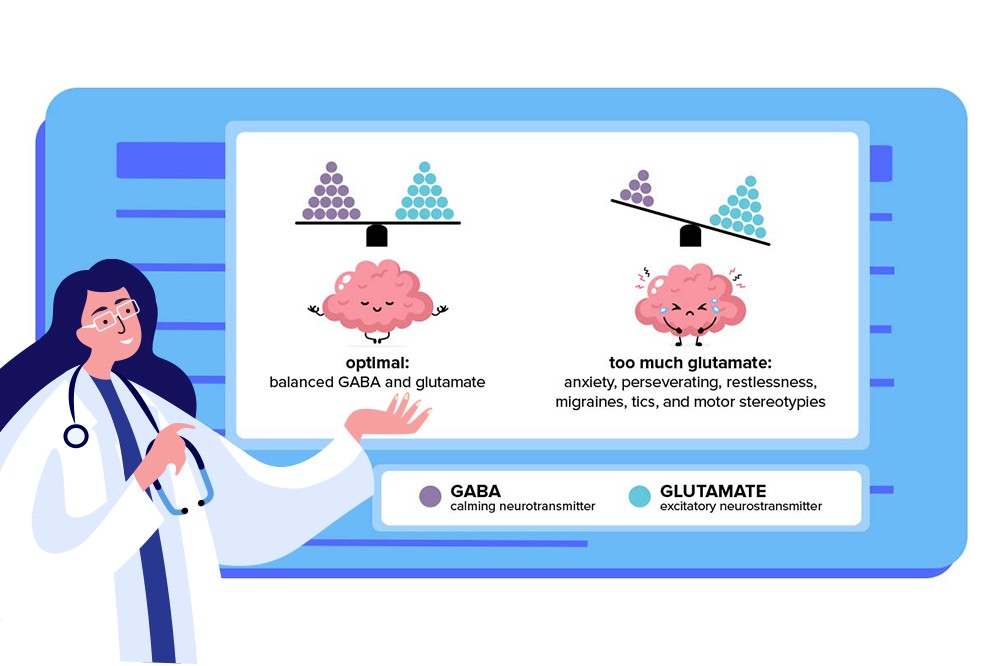
As is the case with most everything in the body, when it comes to glutamate, it is all about balance. Hence, the problem occurs when we have too much or too little glutamate.
- Glutamate, which is excitatory, needs to balance with GABA, which is calming.
- Consequently, an imbalance between the two can cause issues with sleep, anxiety, or focus.
- Furthermore, research shows that kids with autism tend to have too much glutamate and not enough GABA.
- Likewise, if your child has PANS or PANDAS, they will have glutamate regulation issues.
- Glutamate and inflammation are intertwined. So, if you have inflammation, you likely have high glutamate. Similarly, if you have high glutamate, your body is likely to create inflammation.
What Labwork Can Tell Me if Excess Glutamate is a Problem for My Child?

There are several ways to help determine if your child’s symptoms can be attributed to glutamate toxicity. The easiest and most cost-effective way is to trial a low-glutamate diet and watch for behavioral changes.
However, you may want to consider talking to your child’s doctor about running the following labs to help determine if your child symptoms are being caused by excess levels of glutamate:
- Basic Labwork
- Urine Amino Analysis: gives you an overall average of glutamate and GABA levels. However, this test can be unreliable as it is cannot tell you if glutamate is pooling in certain areas of the brain, which is often the case.
- Blood Test: simple bloodwork can test for blood plasma glutamate levels. But, this test is also unreliable as it will give you an overall average instead of a clear picture.
- Advanced Labwork
- Lumbar puncture: this is one of the most reliable tests because it measures glutamate levels in the cerebrospinal fluid. Unfortunately, cerebrospinal fluid can only be collected through a lumbar puncture, which is very invasive procedure.
- MRI: recent discoveries show that a brain MRI with a 5 Tesla resolution can give an indication as to where glutamate is pooling in the brain. Though reliable, an MRI can be difficult to obtain, especially if your child requires sedation.
What Can You Do to Manage Excess Levels of Glutamate?
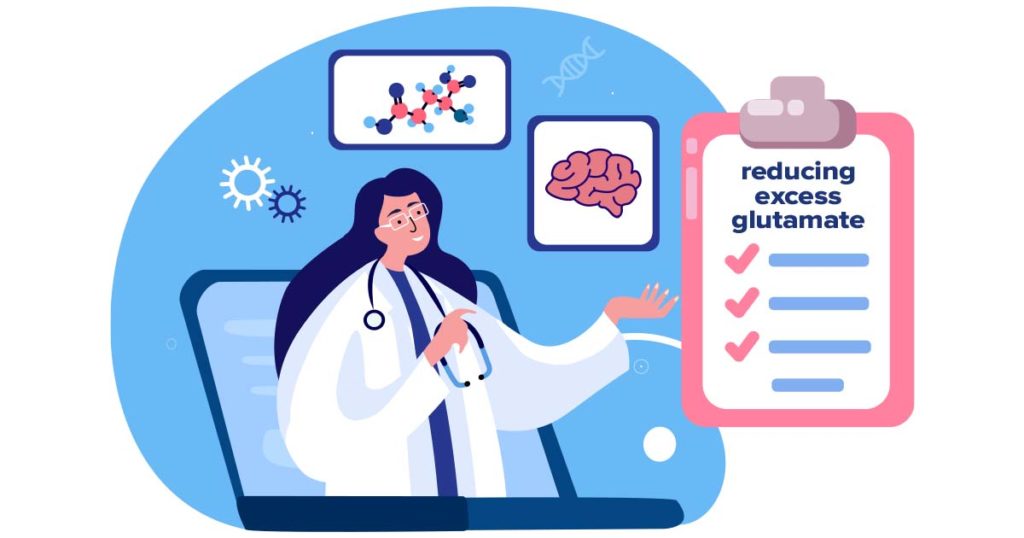
Finally, there are a number of ways to reduce excess levels of glutamate in the body, many of which are easy and inexpensive to implement.
Dietary Interventions
Because certain foods contain high amounts of free glutamate, one of the easiest ways to reduce glutamate toxicity is through dietary intervention. This can be done by removing or reducing foods that are high in free glutamate, such as:
- Gluten, dairy, and soy.
- Processed foods.
- Bone broth: cooking broth for a long time not only results in high amounts of free glutamate, but histamine as well.
- Certain fermented foods such as kefir, cheese, preserved meats, and soy sauce.
- Additional information and guidance for eliminating dietary sources of free glutamate, can be found by visiting the following links:
Medications
You can also reduce free glutamate with prescription medications, such as:
- Namenda (Memantine)
- Amantadine
Supplements
Another way to help establish a balance between glutamate and GABA in the brain is through supplementation. While some supplements can help reduce glutamate, others increase it.
Supplements That Can Help Reduce Glutamate:
- Magnesium blocks the NMDA glutamate receptor
- Selenium is protective against glutamate
- B12 is protective against glutamate
- Alpha Lipoic Acid (ALA) helps convert glutamate
- Berberine helps transport/convert glutamate and is protective
- Herbs (cats claw, licorice root, ginseng, gingko biloba) are all helpful
- Mitochondrial supports to protect against damage from glutamate
- NAC (N-Acetyl Cystine) helps the body regulate glutamate
- B6 (p5p) is a cofactor to make GABA in the brain
Supplements That Can Increase Glutamate:
- L-Glutamine – In addition to contributing to elevated glutamate, glutamine supplementation can increase ammonia production while also impairing ammonia transport and detoxification.
- Glycine – This is generally calming but it can convert to glutamate in some people, especially without enough B6.
- GABA – Supplementing with GABA may not help as GABA can convert to glutamate in the body in some people.
Some people with glutamate issues cannot handle supplements. For this reason, please consult with your child’s doctor before making changes to their supplement regime. Especially if your child’s symptoms worsen when taking supplements.
Remove/Reduce Screen Time
You can also reduce free glutamate through lifestyle changes such as reducing or eliminating screen time. As unlikely as it may seem, research does show that EMF’s increase glutamate:
- “Extremely low frequency electromagnetic field exposure causes cognitive impairment associated with alteration of the glutamate level”
- “Variations of glutamate concentration within synaptic cleft in the presence of electromagnetic fields”
So, if you know that your child has issues with excess glutamate and screen time causes them to stim more, consider reducing their exposure to EMFs in your efforts to regulate excess glutamate.
Conclusion
In summary, if your child is displaying symptoms of increased anxiety, stimming, restlessness, or seizures, please consider elevated glutamate in the brain as a possible reason. After all, reducing free glutamate is a relatively easy and inexpensive intervention to help eliminate these symptoms, thereby offering a better quality of life for your child.
Additional Resources
- Nourished Blessings
- UnBlind My Mind
- The REID Program Facebook group
- Top Reasons to Implement a Gluten-Free, Casein-Free Diet
- Introduction to Medical Interventions for Autism
Studies Showing a Link Between Autism (and related disorders) and Elevated Glutamate In the Brain:
- Zheng, Z., Zhu, T., Qu, Y., & Mu, D. (2016). Blood Glutamate Levels in Autism Spectrum Disorder: A Systematic Review and Meta-Analysis. PloS one, 11(7), e0158688.
- Stanford University Medical Center. (2017). Autism May Reflect Excitation-Inhibition Imbalance In Brain. ScienceDaily. Retrieved October 21, 2020
- Purcell, A., Jeon, O., Zimmerman, A., Blue, M., Pevsner, J. (2001). Postmortem Brain Abnormalities of the Glutamate Neurotransmitter System in Autism. Neurology, 57(9).
- Rojas, D. (2014). The Role of Glutamate and its Receptors in Autism and the Use of Glutamate Receptor Antagonists in Treatment. Journal of Neural Transmission, 121(8), 891–905.
- Brain Imaging study out of Columbia University showing excess glutamate and low GABA in people with OCD:
Marjan Biria, Paula Banca, Máiréad P. Healy, Engin Keser, Stephen J. Sawiak, Christopher T. Rodgers, Catarina Rua, Ana Maria Frota Lisbôa Pereira de Souza, Aleya A. Marzuki, Akeem Sule, Karen D. Ersche & Trevor W. Robbins (2023) Cortical glutamate and GABA are related to compulsive behaviour in individuals with obsessive compulsive disorder and healthy controls



